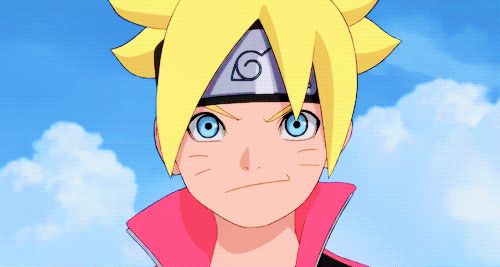The Harajuku icon of J-Pop, Kyary Pamyu Pamyu, offers us a new crazy clip but full of references: Kamaitachi!
In this clip, Kyary Pamyu Pamyu offers us his vision of the Chinese legend "The peregrination to the West", at least the first part: the meeting of the monk Xuán Zàng (Sanzouhoushi in Japanese) with the Monkey King Sūn Wù Kōng (Songokuu in Japanese). We will talk more about the references in the second paragraph. If you want to understand the video better, feel free to read the references first!
Let us first look at the global sense
At the beginning of the video, we find a monk immersed in a dream. In this dream, his little finger is attached to a pink ribbon, which represents the bond between two people. Nevertheless, he decided to go on a trip to Mount Hōrai. We then meet the other protagonist, the monkey king, who decides to attack the monk by making him fall winds and storms. The monkey king, happy with his jokes, finally realizes that he also has a pink ribbon on his little finger, which he does not like. He tries by all means to break it, asking for the help of Japanese yōkai ("monsters"), but does not succeed. The next day, when he was planning to rejoice in a catch stolen from the garden of the Jade Emperor (source of immortality), he notices with dismay that the ribbon is still there. However, he decides to share the magic fruits with the yōkai who helped him before leaving. The monkey king sets off but in the direction of Kamakiri-zaka, where it is possible to pray to break a bond. Along the way, he keeps thinking about the monk and seems torn between accepting the bond, the gods having told him that his dream would come true if he fell in love, and breaking the bond to be free. On their respective paths, the monk and the monkey king end up falling on each other. They fight to break their bond which eventually gives way. We finally find the monk who wakes up and looks at the link wondering if it was a premonitory dream. The clip ends with the monkey king obviously making the decision to cherish this bond.
Let's then dive into the references present in the video
This clip contains a lot of references impossible to know for the vast majority of Westerners. Here are the highlights, you will find links to more complete pages if you want to go even further! (Pages are sometimes only in English)
Let's start with the biggest reference: the Chinese fable "The Journey to the West". In this fable, the Buddhist monk Xuán Zàng travels from China to India in search of sacred texts in order to translate them. He will meet several companions that the gods will put on his way to help him. The first will be the monkey king, Sūn Wù Kōng, whom the monk will release from his prison. Sūn Wù Kōng was serving his 500-year sentence under the 5-fingered mountain (Buddha's hand) for committing a whole bunch of crimes, including eating all the peaches in the Jade Emperor's garden, and especially for challenging Buddha himself and losing. In exchange for his release, he will have to pledge allegiance to Xuán Zàng and help him in his quest.
The second reference seen on the screen is the akai-ito, which is normally represented by a red ribbon. This is a translation of it. This red ribbon is attached to the little finger of two people whose destinies are linked. It can be a soul mate, a marital relationship, that sort of thing. Obviously, the link is invisible to mortals.
Kyary Pamyu Pamyu then tells us about Mount Hōrai (Hōraisan). Mount Hōrai is part of Japanese mythology. It would be an inaccessible island that would contain priceless treasures. We can potentially deduce that, in the clip, the sacred texts would be hidden there.
The chorus is about Kaminari. Kaminari is the deity of lightning. The reference is very present at the beginning of the clip because the monkey king has the power to create storms and lightning.
Another place is mentioned, Kamakiri-zaka. It is a place where there is a shrine where one can come to pray to break the akai-ito.
Finally, she talks about izuna. The izuna is a spirit in the shape of a tiny weasel that allows to know the past and the future. Is it thanks to her that the monk had this dream?
And Kamaitachi in all this?
That's right, that's the title of the song and we haven't talked about it yet. But that's because there's a lot to say about it!
Kamaitachi is a weasel-shaped yōkai ("monster") shaped like a weasel with hook-shaped claws. Its characteristics are found throughout the clip: the hooks of the yōkai and the physical representation of the Kamaitachi ( Kyary Pamyu Pamyu version, of course) with the two hairy characters and their sharp claws at the tips of the fingers. There are different legends about Kamaitachi. In one of them, Kamaitachi is a trio who knock out, cut and cauterize the wound of his victim. In another, a giant praying mantis curses all who come to the Kamakiri-zaka mountain by dropping them, and for every death, someone alive receives a wound, like a hook, from which black blood will flow. We find a bit of these two legends in the clip: the hairy weasel with the claws, Kamakiri-zaka, and the involuntary bond between two people.
We will end with a very funny anecdote: the two people who embody Kamaitachi are a duo of Japanese comedians whose name is none other than… Kamaitachi! Kyary Pamyu Pamyu asked them if they could come in the clip! One of them, Hamaie, even confides in the making-of that they will be able to boast about it for the rest of their lives.
Despite a relatively dark background subject, Kyary Pamyu Pamyu once again absorbs Japanese folklore and makes it cute, cheerful and colorful!















![[Live Report] Rock En Seine 2024 : 20 ans et toujours aussi passionnés !](https://www.justfocus.fr/wp-content/uploads/2024/11/RES24_JOUR01_LANA-DEL-REY_LOUIS-COMAR-12.jpg)





















